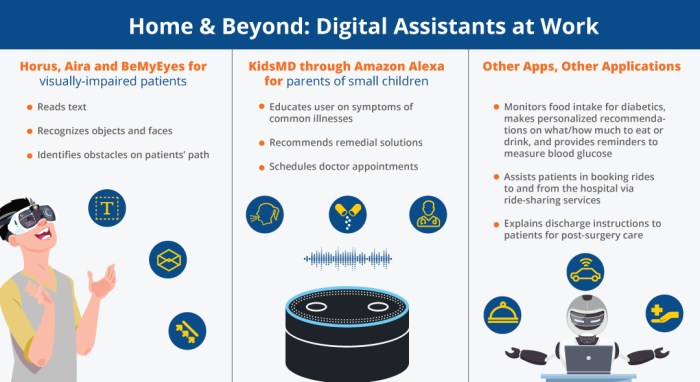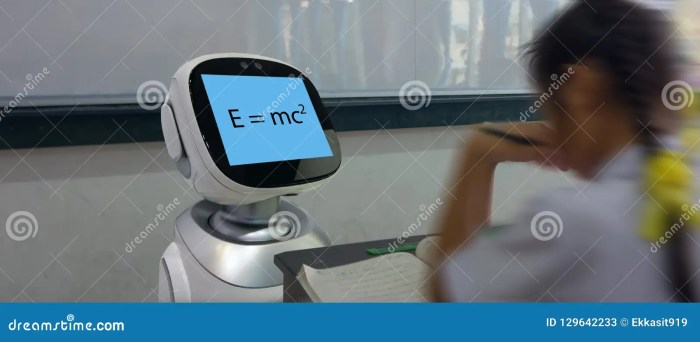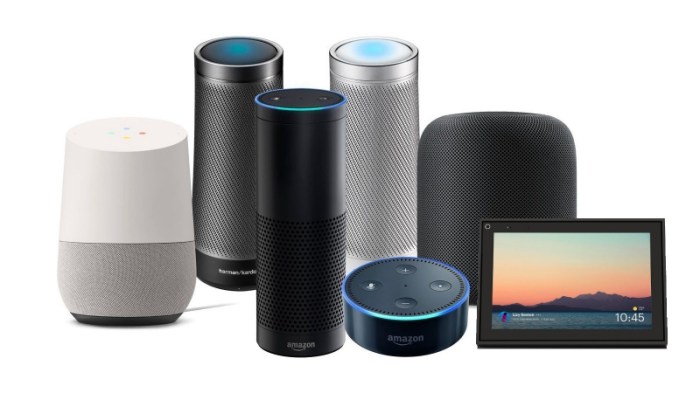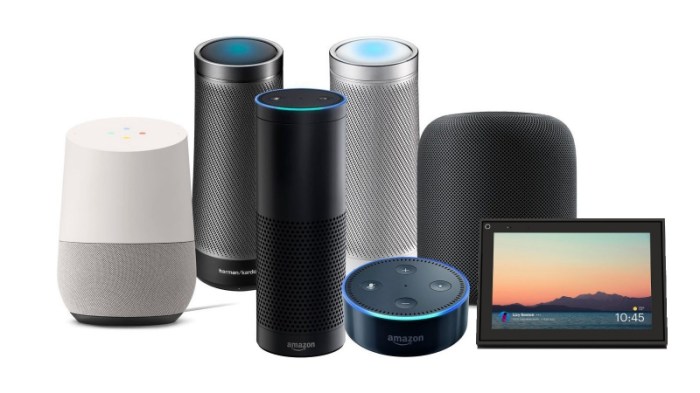Future trends and developments in smart assistant technology promise a future where seamless interaction with technology is the norm. We’re moving beyond simple voice commands towards a world of proactive assistance, personalized experiences, and sophisticated AI integration. This evolution presents both exciting possibilities and significant challenges, particularly regarding data privacy and ethical considerations. Understanding these trends is crucial for navigating this rapidly changing technological landscape.
From enhanced natural language processing that understands nuance and context to the seamless integration of smart assistants with the Internet of Things (IoT), the advancements are transforming how we interact with our devices and our homes. This exploration delves into the key areas driving this transformation, examining the technological advancements, ethical implications, and the potential impact on our daily lives.
Enhanced Natural Language Processing (NLP)

The evolution of smart assistants hinges significantly on advancements in Natural Language Processing (NLP). Future smart assistants will need to move beyond simple command execution to truly understand the nuances of human language, context, and intent. This will enable them to provide more accurate, helpful, and personalized responses. Improved NLP will be the key to unlocking a more intuitive and seamless user experience.
The enhanced ability of smart assistants to understand and respond to complex and nuanced requests will revolutionize how we interact with technology. This improvement will go beyond simple recognition to encompass a deeper understanding of sentence structure, semantics, and the underlying intent behind user queries.
Complex Request Handling, Future trends and developments in smart assistant technology
Imagine a scenario where a user asks their smart assistant: “I need to book a flight to Paris next week, but I’m flexible on the dates, preferably something under $800, and I need it to be a direct flight from JFK, if possible, but I’m open to layovers if it significantly reduces the cost.” Current smart assistants might struggle with such a multifaceted request. Future systems, however, leveraging advanced NLP, will be able to parse this request, identify the key constraints (budget, dates, origin airport, direct flight preference), and efficiently search for and present suitable flight options. This demonstrates the move towards a more conversational and less rigid interaction with technology, catering to the user’s flexibility and complexity of needs.
Multilingual Support and Real-Time Translation
The potential for multilingual support and real-time translation within smart assistants is transformative. Imagine a world where a user can seamlessly converse with their smart assistant in their native language, regardless of where they are or what language the assistant is primarily designed for. This feature would break down language barriers, making technology more accessible to a global audience. Real-time translation capabilities would not only facilitate communication but also allow for the seamless integration of information from various sources in different languages. For example, a user could ask their assistant to summarize a news article in Spanish, and the assistant would instantly translate and present the summary in English. This capability will be crucial in a globally interconnected world.
Contextual Awareness
Contextual awareness is paramount for future smart assistant interactions. This goes beyond remembering previous interactions within a single session; it involves understanding the broader context of the user’s life, their preferences, their schedule, and even their current emotional state. For instance, if a user frequently asks for news updates on specific topics, the assistant can proactively provide those updates without being explicitly asked. If the assistant detects a frustrated tone in the user’s voice, it might offer assistance or suggest calming activities. This level of contextual awareness will lead to more proactive and personalized support, transforming smart assistants from simple tools into genuinely helpful companions. Examples of this could include smart home assistants learning the user’s sleep schedule to automatically adjust lighting and temperature, or travel assistants anticipating potential delays based on current traffic conditions and proactively suggesting alternative routes.
Integration with the Internet of Things (IoT): Future Trends And Developments In Smart Assistant Technology

Smart assistants are rapidly evolving from standalone devices into central hubs for managing and controlling the increasingly interconnected world of smart homes. Their ability to seamlessly integrate with a wide array of IoT devices offers users unprecedented convenience and control over their home environments, transforming everyday tasks into effortless experiences. This integration is fundamentally changing how we interact with our homes and the technology within them.
Smart assistants act as the primary interface for a smart home ecosystem, allowing users to control various devices through voice commands or app interactions. This centralized control simplifies complex tasks, offering a single point of access for managing lighting, temperature, security systems, entertainment, and appliances. For example, a user could instruct their smart assistant to “turn off the lights in the living room and set the thermostat to 20 degrees,” eliminating the need to manually control each device individually. This streamlined approach improves efficiency and enhances the overall user experience.
Methods of Integrating Smart Assistants with IoT Devices
Several methods facilitate the integration of smart assistants with IoT devices. The most common approaches involve utilizing specific communication protocols and APIs. Many smart home devices are designed with compatibility in mind, incorporating support for protocols such as Zigbee, Z-Wave, Wi-Fi, and Bluetooth. These protocols enable direct communication between the devices and the smart assistant, allowing for seamless control and data exchange. Alternatively, cloud-based platforms act as intermediaries, receiving commands from the smart assistant and relaying them to the appropriate IoT devices. This approach offers greater flexibility and scalability, supporting a wider range of devices and manufacturers. Finally, some smart assistants utilize local network communication for increased privacy and responsiveness, avoiding reliance on cloud services for every interaction.
Comparison of IoT Integration Methods
| Integration Method | Advantages | Disadvantages | Example |
|---|---|---|---|
| Direct Protocol Integration (e.g., Zigbee, Z-Wave) | High reliability, low latency, enhanced privacy (data doesn’t leave the local network) | Limited device compatibility, requires specific hardware support | A smart light bulb directly communicating with a smart assistant via Zigbee. |
| Cloud-Based Integration | Broad device compatibility, ease of setup, scalability | Dependence on internet connectivity, potential privacy concerns (data transmitted over the internet), latency issues | A smart thermostat controlled via a cloud platform like Google Home or Amazon Alexa. |
| Local Network Integration | Enhanced privacy, low latency, reduced dependence on internet connectivity | More complex setup, potentially limited device compatibility | A smart speaker controlling locally networked smart appliances via a local network protocol. |
Improved Personalization and Customization

Smart assistants are rapidly evolving beyond simple command execution, moving towards a future where they anticipate needs and adapt seamlessly to individual users. This shift towards hyper-personalization hinges on the sophisticated analysis of user data to create truly tailored experiences. The ability to understand and respond to individual preferences and communication styles will be key to the next generation of smart assistants.
The foundation of improved personalization lies in robust user profiles. These profiles go beyond basic demographic information, encompassing a wealth of data points reflecting user behavior, preferences, and communication styles. This data, collected ethically and responsibly, allows smart assistants to learn user routines, predict needs, and proactively offer relevant information or services. For example, a user’s consistent morning routine of checking the weather and news could lead the assistant to automatically present this information upon waking, eliminating the need for explicit commands. Furthermore, analyzing communication styles – whether concise or verbose, formal or informal – allows the assistant to adjust its own responses accordingly, creating a more natural and comfortable interaction.
Methods for Adapting to Individual User Preferences and Communication Styles
Smart assistants employ various machine learning techniques to adapt to user preferences. Natural Language Understanding (NLU) models analyze the content and style of user requests to identify patterns and preferences. For instance, if a user consistently uses informal language, the assistant will likely respond in kind. Similarly, if a user expresses a strong preference for a particular news source or music genre, the assistant will prioritize that information in future interactions. Reinforcement learning algorithms further refine the assistant’s responses based on user feedback, both explicit (e.g., ratings or explicit preferences) and implicit (e.g., frequency of use or engagement with specific features). This continuous learning process allows the assistant to continuously improve its understanding and responsiveness to individual users. For example, if a user repeatedly dismisses suggested news articles from a certain source, the assistant will learn to reduce the frequency of recommendations from that source.
Challenges in Balancing Personalization with User Privacy
The pursuit of highly personalized experiences presents significant challenges regarding user privacy. The more data an assistant collects, the more accurate and personalized its responses can be, but this also raises concerns about data security and potential misuse. Striking a balance between providing a seamless and personalized experience and protecting user privacy requires careful consideration of data collection practices, robust security measures, and transparent data usage policies. Implementing strong encryption, anonymization techniques, and providing users with granular control over their data are crucial steps in mitigating privacy risks. Furthermore, establishing clear guidelines and regulations for the ethical use of user data is paramount to building trust and ensuring responsible innovation in the field of smart assistant technology. The ongoing debate around data ownership and control highlights the importance of proactive measures to address these concerns and build a future where personalization does not come at the expense of individual privacy.
The future of smart assistant technology is undeniably bright, yet fraught with complexities. As AI continues to evolve and integration with IoT devices deepens, the potential for personalized and proactive assistance is immense. However, addressing ethical concerns around data privacy and ensuring accessibility for all users remain paramount. The path forward requires a balanced approach, leveraging technological advancements while prioritizing responsible innovation and user well-being. Only then can we fully realize the transformative potential of smart assistants.
Query Resolution
Will smart assistants replace human interaction?
No. Smart assistants are designed to augment, not replace, human interaction. They aim to improve efficiency and convenience, not to substitute human connection.
How secure is my data with a smart assistant?
Data security is a major concern. Reputable companies implement robust encryption and security protocols, but users should still be mindful of the data they share and choose assistants with strong privacy policies.
What about the potential for bias in AI-powered assistants?
Bias in AI is a significant concern. Algorithms are trained on data, and if that data reflects existing societal biases, the AI will likely perpetuate them. Ongoing efforts are focused on mitigating bias through improved data sets and algorithmic design.
You also can investigate more thoroughly about mobile game monetization strategies and technologies to enhance your awareness in the field of mobile game monetization strategies and technologies.

